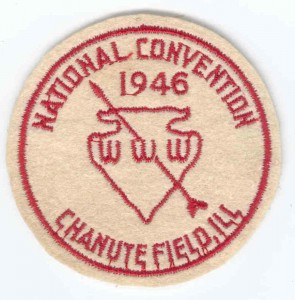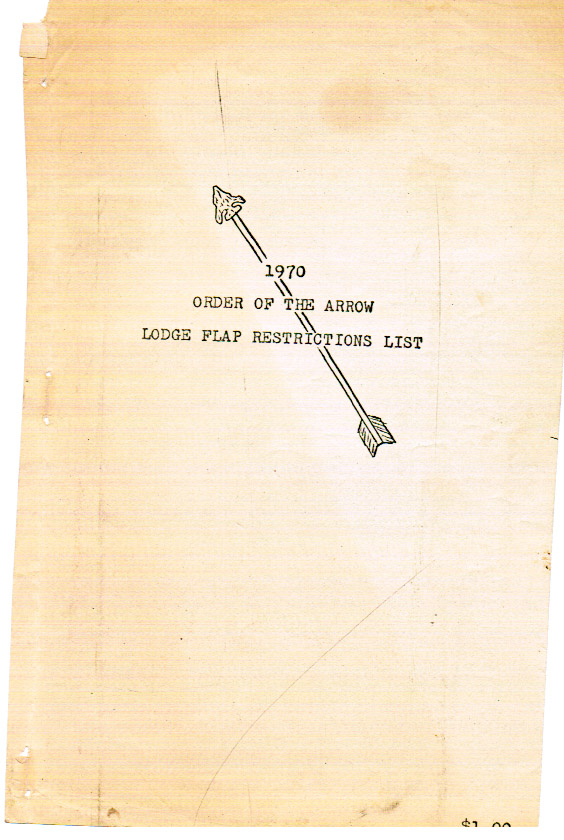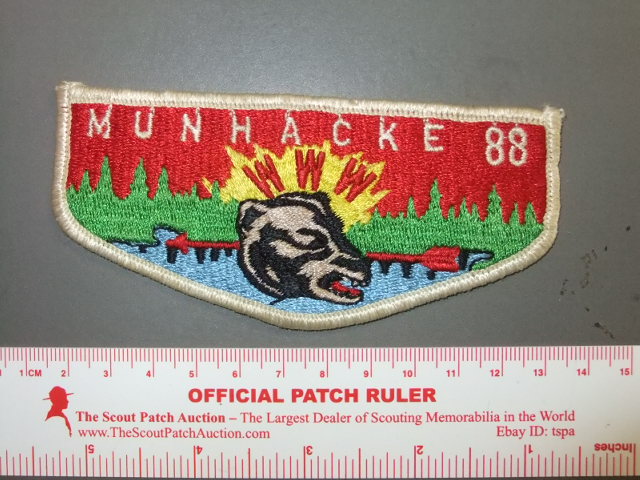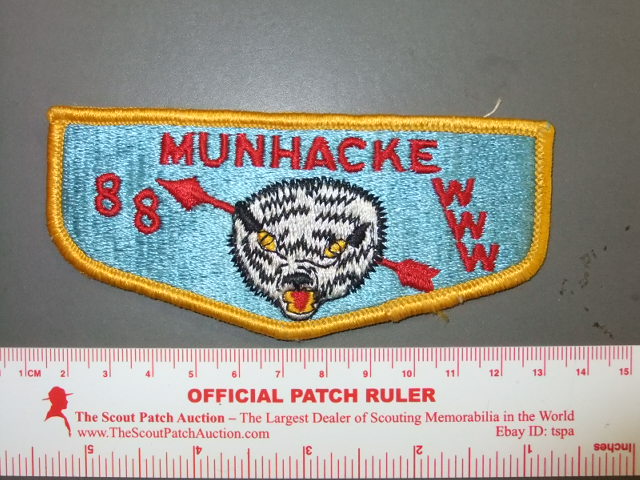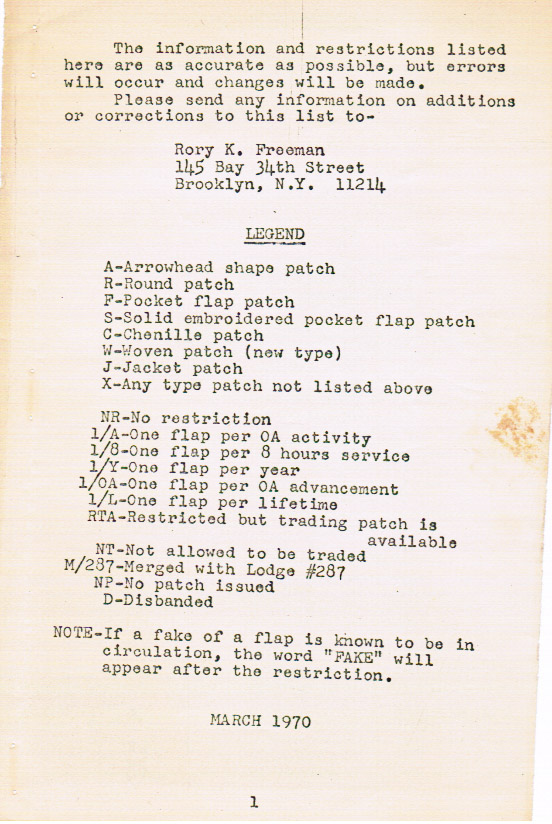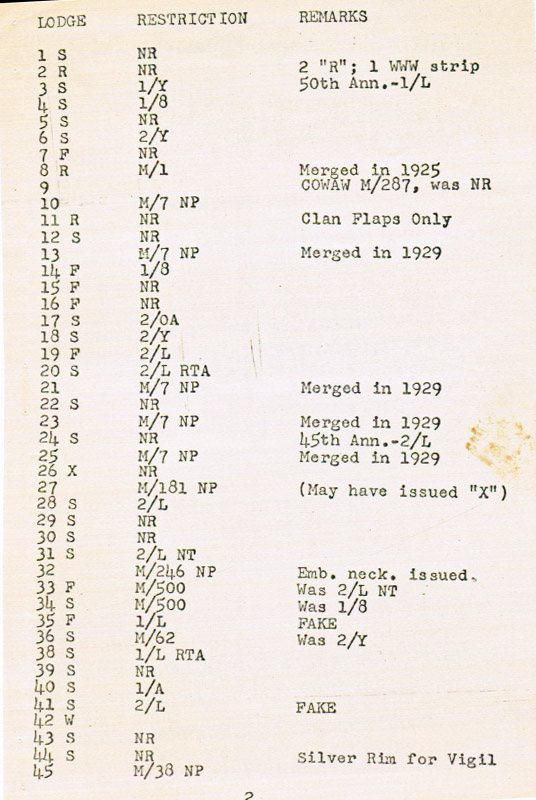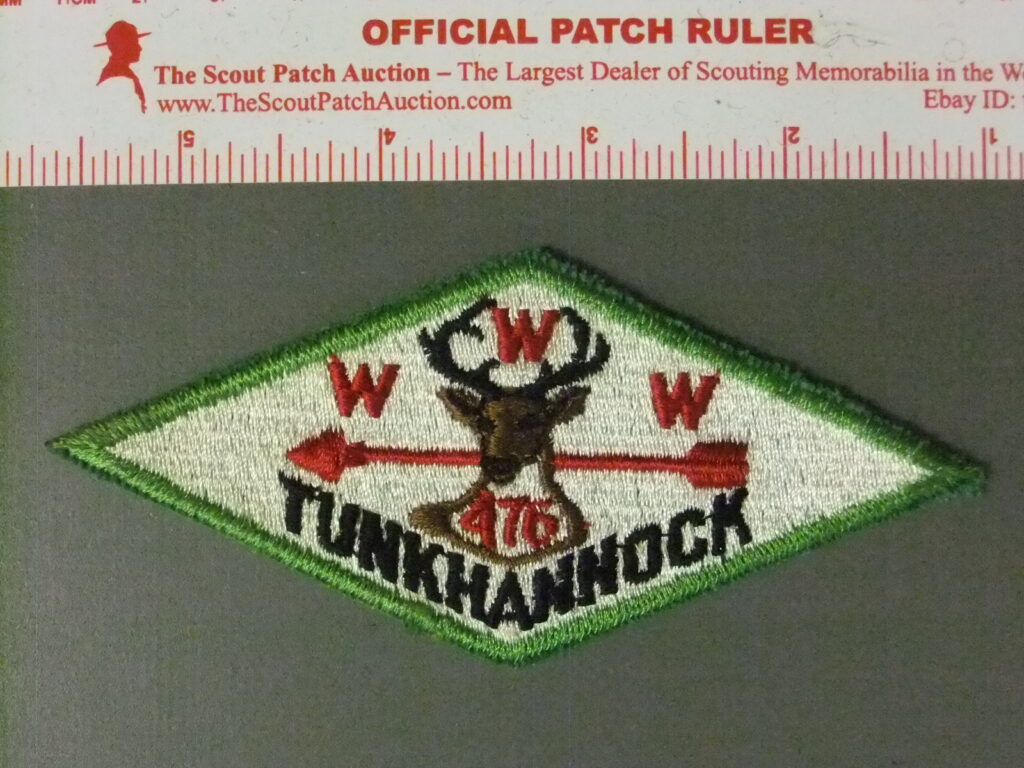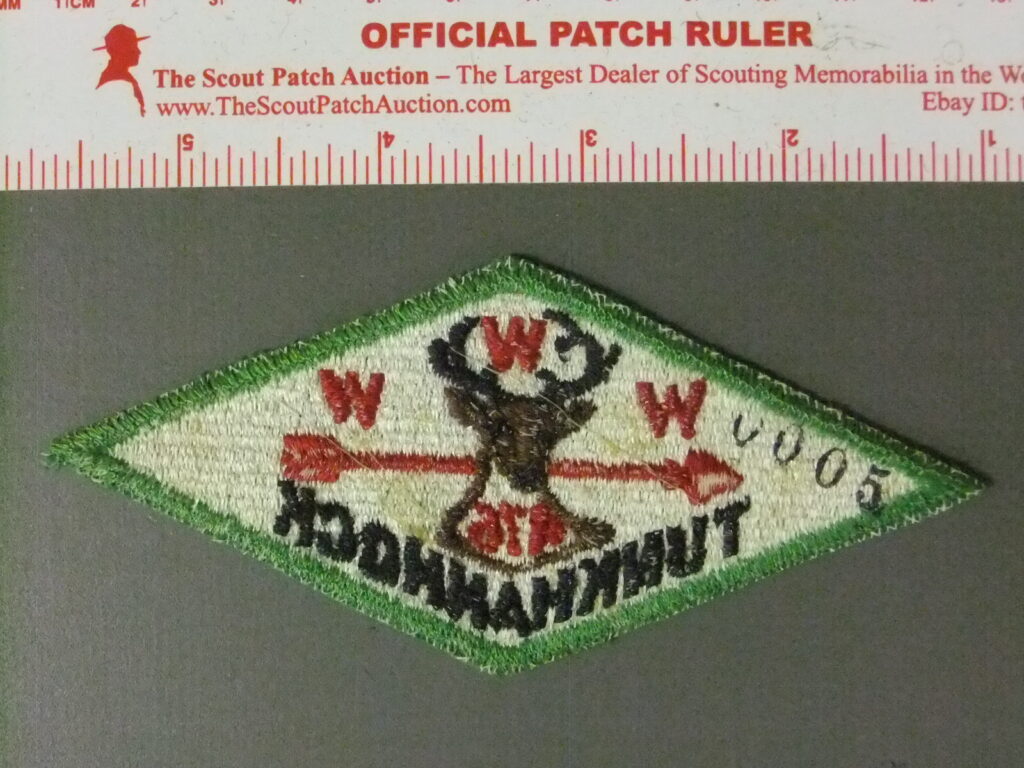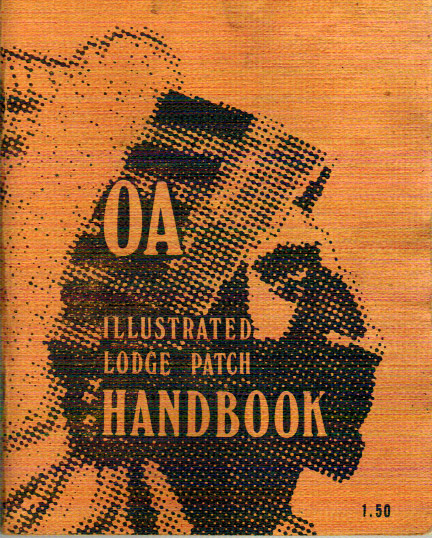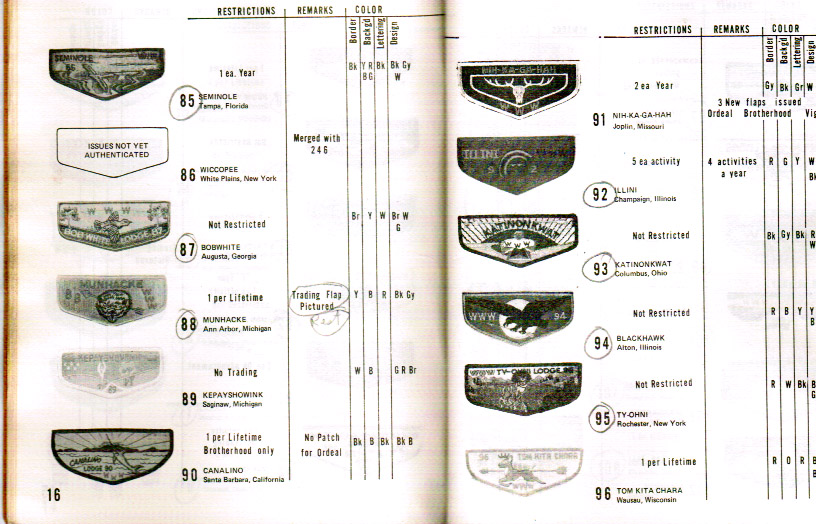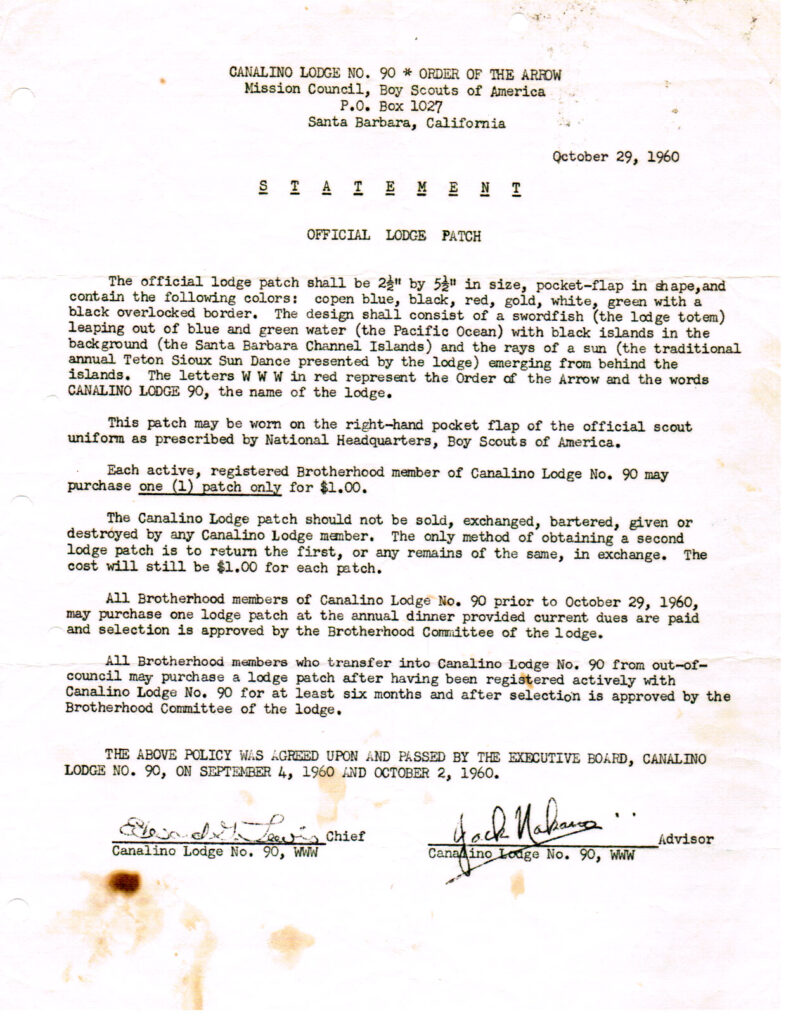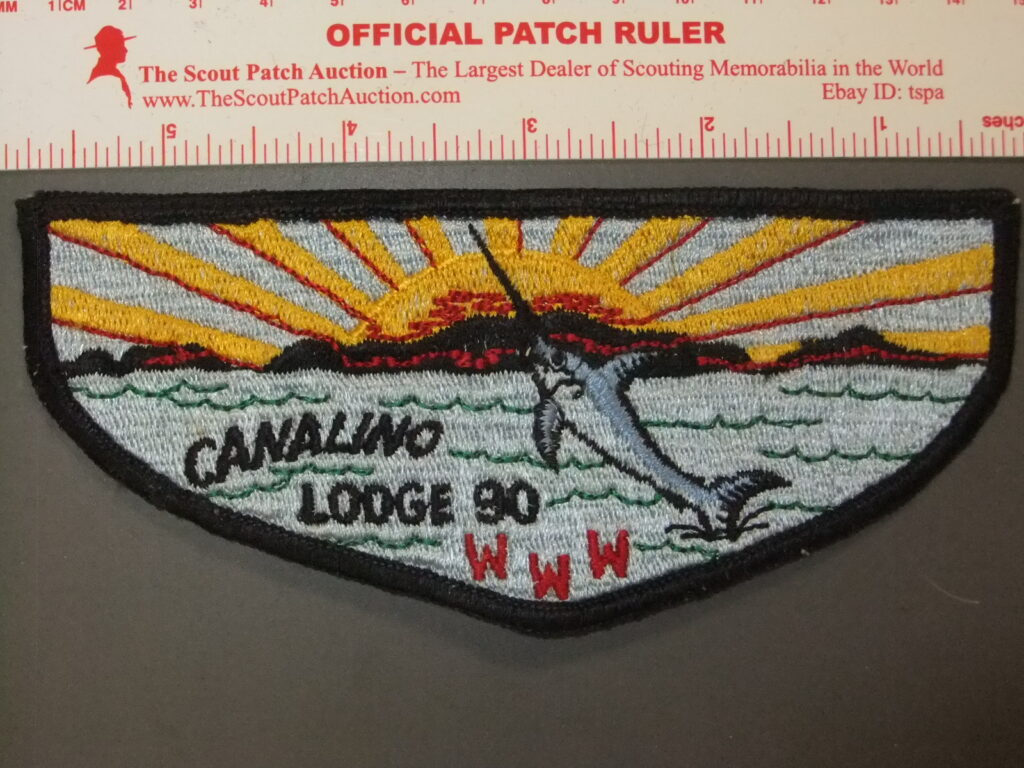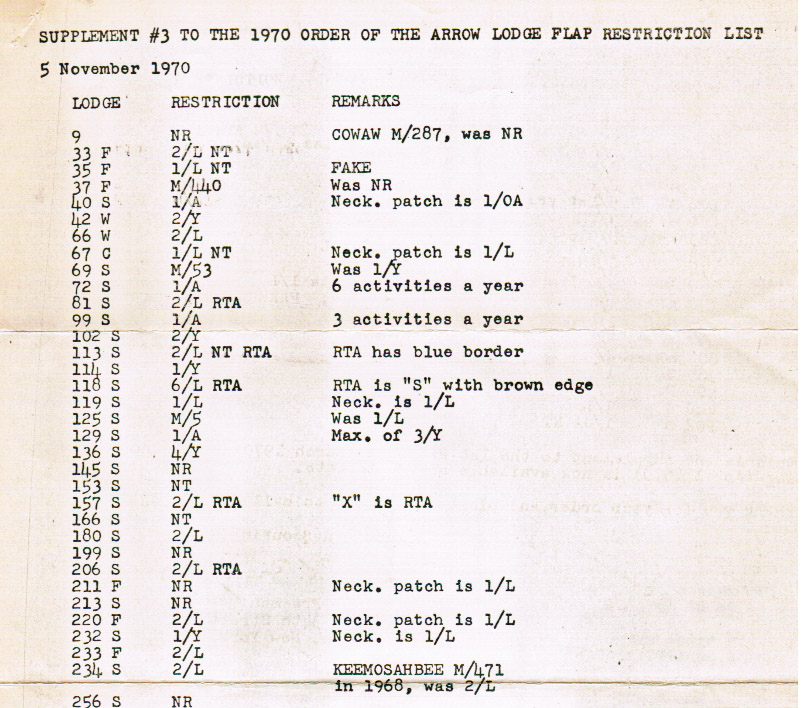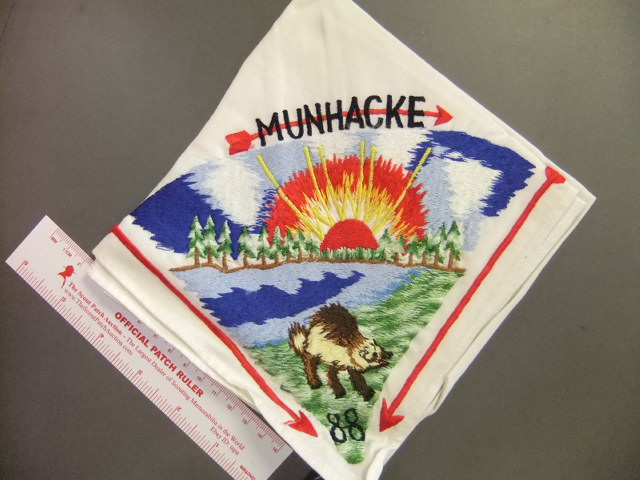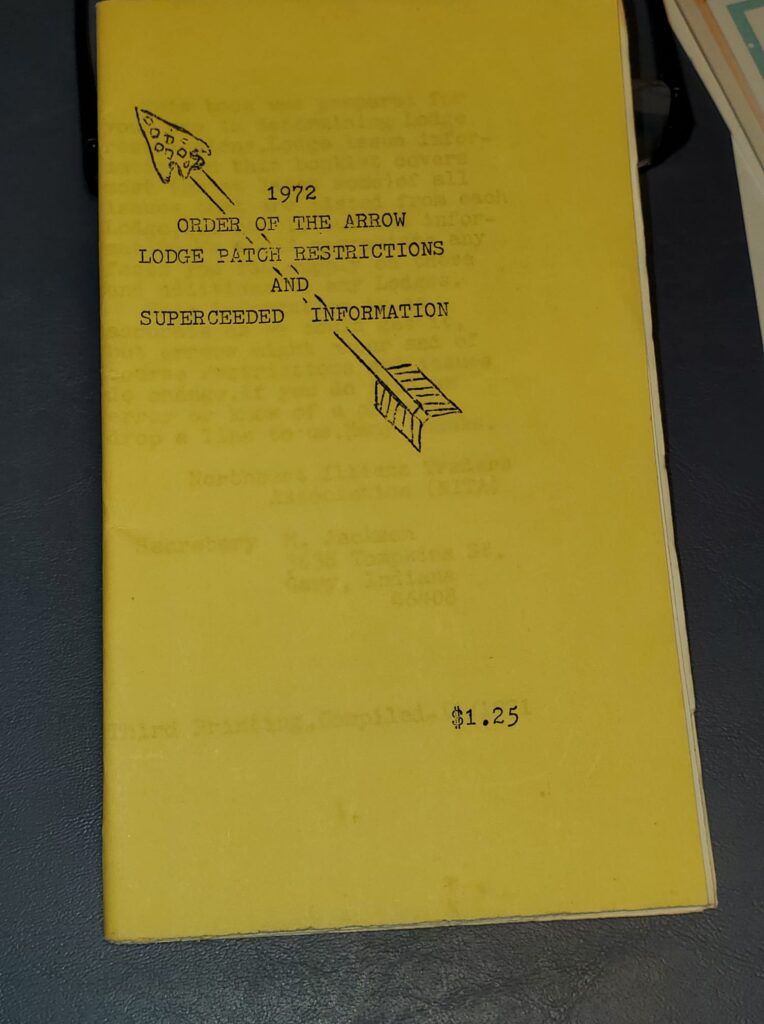We’ve been helping a Scouter re-create his original merit badge sash. He recently shared some information about his Scouting history including a wonderful camp staff photo from Camp Sunnen of Cahokia Mound Council headquartered in Madison County, IL. Camp staff photos are fun but what really caught my eye was all of the staff being OA members. I’ve had numerous conversations with Paul Myers, Terry Grove and others that finding early, particularly non-NOAC/conclave, photos of OA members is not easy. Now, 1957 is not ‘early’ but its now 52 years ago as well.Here’s what Eagle Scout and Vigil Honor member James Turner Harris provided to us (click on the picture for a larger image):
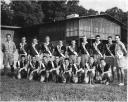
Boy Scouts of America, Cahokia Mound Council, Madison Co., Ill. – Camp Sunnen, Shirley, Mo. (on Mo. Rte. # 8) between Postosi, Mo. and Steeleville, Mo. located on Sunnen Lake owned by Sunnen Products, St. Louis, Mo.Post By: Larry Ryan
1957 Staff Photo Back To TopIn the picture:
Clay Breihan Ed Rickert Jim Vierling Walt Schramm Ony Pashea Tim Bennett Larry Ryan Les Bickel Bill Savage Jim Harris Frank Long Dick Cassens Webb Lewis Lowell Schaefer Tom Renz Rich ColemanTop Row, left to right:Clay Breihan, Ed Rickert, Jim Vierling, Walt Schramm, Ony Pashea, Tom “Frenchie” Dubocheau, Don Davidson, Tim Bennett, Larry Ryan, Les Bickel
Front Row, left to right:
Bill Savage, Jim Harris, Frank Long, Dick Cassens, Webb Lewis, Lowell Schaefer, Tom Renz, Rich Coleman |
Jim, a delegate to the 1956 National Order of the Arrow Conference, shared some pictures on the Cahokia 126 lodge delegation:
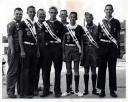
This is a photo of the group from the Cahokia Mound Council #126 that went to Bloomington, Ind. in 1956.
Left to right:
Jim Chism – Granite City, Ill.
Jim Harris – Granite City, Ill.
Mickey Strange – Madison, Ill.
Carl Temple – Granite City, Ill.
Ed Rickert – Granite City, Ill.
Dick Dawkins – Collinsville, Ill.
Rollin Henn – Granite City, Ill. (to my knowledge 1st Vigil in our conf.)
Tom Temple – Granite City, Ill.
Missing:
Ronney Loos – Marine, Ill.
Walt Schramm – Edwardsville, Ill. (OA Lodge Chief)
Notice that we are all wearing the flap OA patches. As I remember, we got them not too long before we went to Bloomington. We were probably the first scouts in #126 to wear the flap patches. Also notice, that on my uniform you see the Camp Sunnen patch. The scan of my OA flap patch is the same uniform as in this photo and still has the original flap patch and also the Camp Sunnen patch on it but with a few more years added to the count.
I did not notice originally when I sent the photo but the neckerchief I am wearing .. white .. is the one that I had E. Urner Goodman sign with an ink pen while I was at the conclave. On that neckerchief was my original Cahokia #126 round, white OA patch with the chief head on it. I wish I had the neckerchief of course but I wish I had at least a photo of it. Anyway it sort of dates the switch over from the round to the flap .. circa just before the 41st OA conclave as I remember.
I remember that Dr. E. Urner Goodman was there and I was lucky enough to see him. I remember that I had a white neckerchief with the “old” round, white Cahokia OA patch on it and I got him to sign it in ink .. no sharpies (lol) back in 1956. It ran a bit and I put it away for safe keeping but it must have disappeared when I was still living at home back in the early 60s. I just remember that he seemed old and was sort of small and thin .. I think.
I know we stayed on campus at Ind. U. The only other thing that I can remember is walking to the “downtown area” by the campus and of course we had out uniforms on .. and some locals wanted to start a fight until they realized they were vastly outnumbered. I was sort of in the background and after that I headed back to the campus area .. .Ha Ha. Not a great warrior.
Unfortunately that is about it. I do have a plastic note book or pad or some thing from there that I kept and a patch and maybe some thing else but I would have to look.
I have told Roger Schestereit, Floyd Jordan in Granite City .. that we were give 5 of the “flap patches” to trade at Bloomington. I know that the flap patch that I have is from Bloomington and 1956 because I made sure my mother sewed on “the new flap patch” and took off the “old round white patch.” I wanted to be “cool and hip” I guess.
The reason I bring that up is that I have never seen the “golden” flap patch that is supposed to be the first and so rare. I do not ever remember seeing anything but the “yellow” one that I have and seemed to be the more common one. I do know that I got flap patches as soon as they were available so I am not sure how or when or why the golden one came into being.
Addendum:
James sent us pictures of the flaps he received just prior to the the NOAC in 1956. Here are the images and his comments. Click on the images to get a larger size.
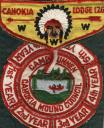
Roy,
This is the very first Cahokia #126 OA flap patch that I ever got. I wore this to the 41st Natl. OA Conclave in Bloomington, Ind. some time after 8/27/1956.
That date is the date of the photo showing me wearing the patch. At the time of the photo, I had attended Camp Sunnen as a camper in 1955 and I had just finished my first year as Asst. Sports Director for the camp in summer 1956.
jim

Roy,
I got this patch at the same time as the one that was in the photo that I just sent you on my summer uniform. With the summer uniform, it went to camp with me in 1957, 1958 and 1959 after that photo was taken and it got WASHED and not dry cleaned. I have no idea if mom ever dry cleaned this winter uniform but if she did clean it .. it would have been DRY CLEANED and not washed. I think you can tell by the condition of the patch. It is mint except it was sewed on to the uniform.
Like I said before, I was issued these two plus 5 to trade at Bloomington (after 8/27/1956) so I still have my TWO ORIGINAL FLAP PATCHES. I also have the original round white one but it is in my collection.
I hope I have helped out a bit in dating the patches. All I can say is that I know that the ones that I have sent in the photos were issued after summer camp in 1956 and before we went to the OA conclave and as I remember they are the original color patches and all of us who went to Bloomington got them and we should have been the first to receive them.
Hard to remember back 53 years ago though.
jim
